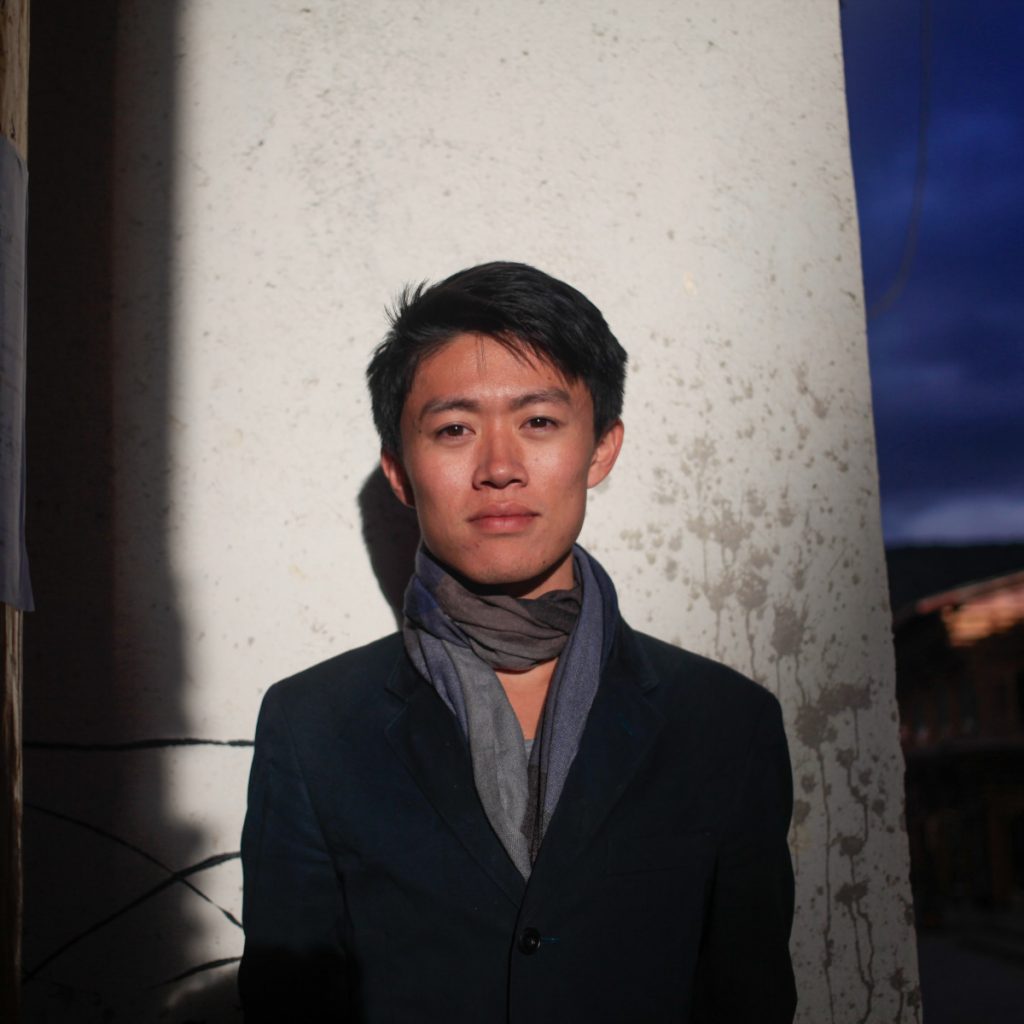
NER staff reader Sarah Wolfson talks to Thomas Dai about his essay “Driving Days” and all the “different people, books, images, etc. getting in and out of the car at different points of the essay.”
SW: “Driving Days” centers on a road trip you took to follow Vladimir Nabokov’s butterfly-collecting routes across America. Yet the essay is so much more than a literary travelogue. In it, you explore the self and contemporary America by considering migration, queerness, belonging, Asian-American identities, and the idea of lens more generally: who is looking at whom and how. It’s an ambitious and multifaceted piece. When you began your road trip, did you have a sense of just how much this essay would encompass?
TD: When I began the trip, I wanted to keep the essay rather minimal and focused: I was going to write about Nabokov, all these American places he’d gone to hunt butterflies, and I was going to do it while also driving around to those places. That was five years ago, and each time I’ve pulled the essay back out to revise, that same basic story—Nabokov, me, the butterflies, driving—would feel a bit foggier, and the other stuff started seeping in, as if to replace what my memories and notes alone couldn’t supply. I wound up with this mishmash of stuff, some of which feels organically related to what I was doing that summer, some of which feels a bit more forced, but I guess I liked the idea of all these different people, books, images, etc. getting in and out of the car at different points of the essay. I actively dislike driving, which doesn’t translate well to writing about a road trip, and so getting to bring along all this “baggage” made a really boring and at times harrowing activity much more interesting for me.
SW: What surprised you most about the writing of this essay?
TD: Honestly, that I spent as little time as I did writing about cars, car culture, or the literal road. Luckily, Nabokov always seemed more concerned with the roadside than the road—he never drove but was a frequent passenger—so I let that be my license to take the same stance, even if, in my case, the physical act of driving was obviously still very much part of the experience.
SW: This piece looks like a travelogue but moves like an essay. In the span of one paragraph you hop from Tori Amos to white aspen trees to Lolita. Later you move poignantly from Nabokov’s “Continental” method of killing butterflies for collection to a memorial for Matthew Shepard. Themes emerge and are refined as new vignettes appear. How did you think about structure when writing this piece? Was it something that you mapped or that emerged organically?
TD: With this essay, I actually tried my best not to fight the simple, linear structure that defines pretty much every road trip I’ve ever been on. You start somewhere. You end up somewhere else. What you see and consider along the way is the essay. Because all the road names I take as section headings refer to actual roads which I drove on in exactly that order, this essay definitely has a map underlying it, and I depended on that map to keep me situated while I made all these essayistic tangents on Nabokov, Tseng Kwong-Chi, Grindr escapades, lepidoptery, and everything else.
SW: You write with nuance about Nabokov’s antihero Humbert Humbert. You manage to find in him “clues about how most of us, good or evil, seem to live our lives.” How difficult was it to incorporate a character like Humbert into the piece?
TD: Humbert’s one of those characters (and Nabokov one of those writers) who’s obviously garnered a lot of attention from scholars and other writers. That can be intimidating, especially if you feel like you need to say something “new” or specific to your moment. This essay definitely doesn’t have anything new to say about Humbert or the literary ethics of Lolita, which doesn’t mean I’m not interested in that whole discourse (recent, great essays on Lolita by Ian Frazier and Susan Choi come to mind), but there’s also no getting around the fact that my own Nabokovian journeying really began with another text, Speak, Memory, and another character: Nabokov-as-child, swinging his butterfly net. I think this essay reflects that bias.
SW: You say you don’t want to “pin [yourself], insect-like to the coattails of just one story.” To me, that reflects a central purpose of essays: a rejection of easy certainty in favor of complicating, opening, connecting. What attracts you most to the essay form?
TD: Pretty much what you just said: the desire to complicate narratives, especially the narratives we tell ourselves about ourselves, but also that instinct’s opposite, which I think of as a move towards clarity that never quite clarifies. Essays search for the heart of things but tie themselves in knots to get there—if they get there, and usually they don’t.
SW: You’re currently working on a PhD in American Studies. This essay takes a creative lens to the study of America. How does your academic work inform your creative essays or vice versa?
TD: Oh boy, that’s definitely a question I’m still figuring out for myself. All I can say for now is that there’s first and foremost a practical connection between my academic work and my writing. Academia provides me the time and resources I need to write, even as it also exerts demands that take that time away, or rather redirects that time elsewhere. More specifically, I couldn’t have taken off on this trip if I hadn’t gotten a small grant from a center at the University of Arizona where I did my MFA. I also would’ve dragged my feet on writing the essay longer than I did if I hadn’t taken a course on space and literature at Brown, where I’m doing my doctorate, that had rather lax rules about what made an “academic” term paper. I’m sure there’s also a more conceptual connection between my training in American Studies and how I write about America, but that connection can be hard for me to describe, even to myself, without caricaturing what “academia” and “creativity” are and can be.
SW: “Driving Days” is part of a larger set of essays that you describe as “mapping the self.” Could you tell me more about that project?
TD: The collection I’m working on straddles two interrelated genres: travel-writing and place-writing. Both are genres that can be rather sentimental, which I admittedly enjoy (every first draft I write verges on the florid), but which I also have learned to be wary of, because there’s so much at stake when we represent or claim an affinity for a place. Boiled down to their cores, the essays in this project are all about the relations we forge with different places, whether fleeting or long-term, and how those relations are in a constant state of flux. The essays are maps in a way, but mutable ones, at once fallible and incomplete.
SW: You’re about to set off on more travels. Where are you headed and what do you hope to find?
TD: Speaking of sentimental journeys, I’m traveling to East Tennessee, to what I guess would be my version of Nabokov’s Vyra. I haven’t lived in the South in quite some time, and so there’s definitely some writerly motive hanging about in my peripherals, but it’s early stages yet, and I’m mostly just glad to be headed home.
SW: Thanks so much for speaking with me about this wonderful essay.

Sarah Wolfson, a staff reader for NER, is the author of A Common Name for Everything, which won the A.M. Klein Prize for Poetry from the Quebec Writers’ Federation. Her poems have appeared in Canadian and American journals including The Walrus, TriQuarterly, The Fiddlehead, AGNI, and Michigan Quarterly Review. Originally from Vermont, she now lives in Montreal, where she teaches writing at McGill University.